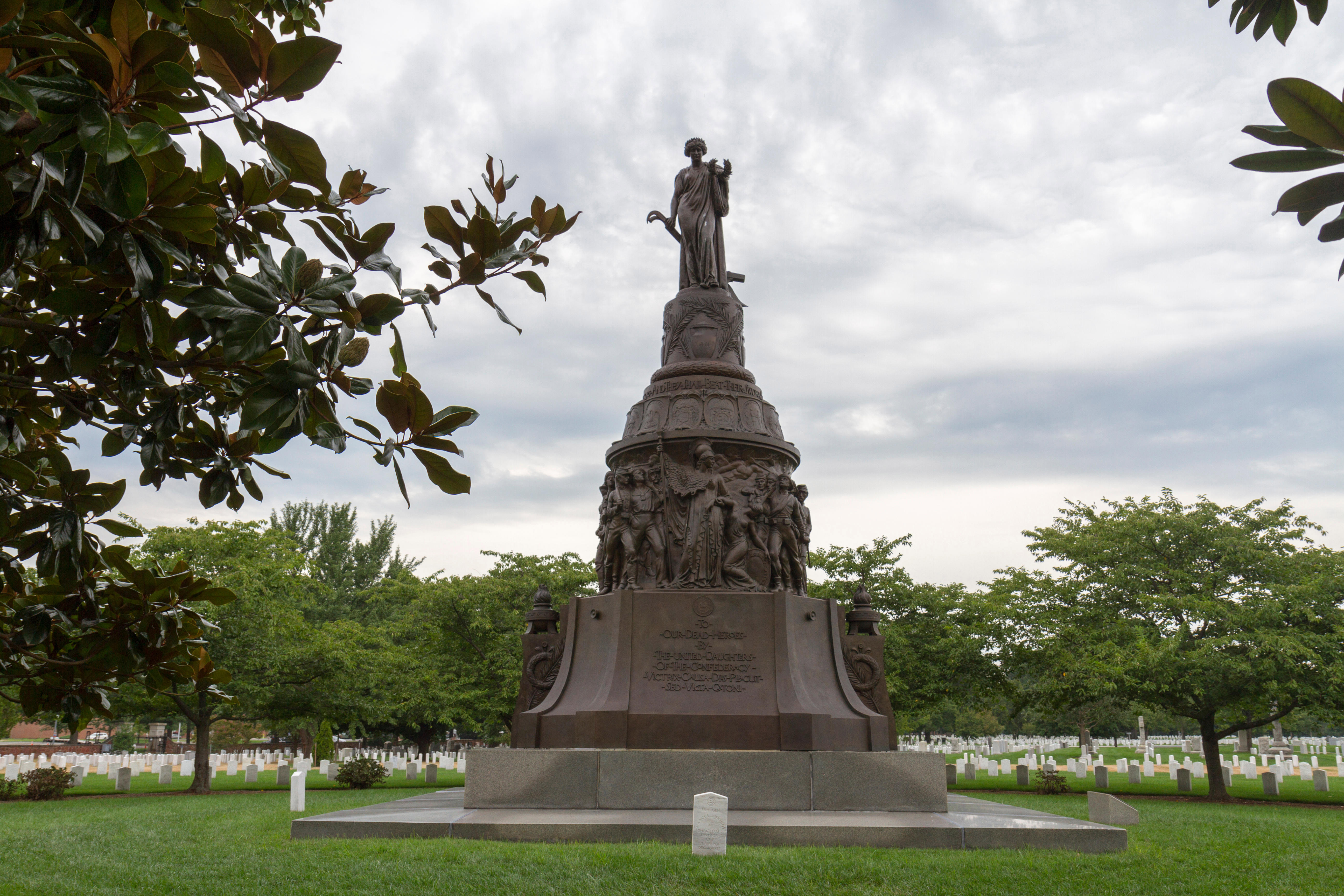Defenders of Confederate symbols distort history to sow division
Thanks to a bipartisan measure included in the 2020 National Defense Authorization Act, all iconography glorifying the Confederacy at military installations in the U.S. – memorials, statues, building names and other symbols – must be removed by Jan. 1.
This requirement is federal law.
The military has already made progress toward its goal, changing the names of bases that honored traitors and recently planning to remove the Confederate memorial at Arlington National Cemetery.
Now opponents of these changes are attempting to distort and misrepresent history, using propaganda that pro-Confederates have employed since the end of the Civil War. The most prominent and dangerous Confederate propaganda erases slavery as the Confederate cause and promotes the idea that the Confederacy somehow stands for “unity” in American memory.
In a recent Wall Street Journal commentary, Jim Webb, a former U.S. senator from Virginia and also a former U.S. Navy secretary, pulled out both tricks in his defense of Arlington’s Confederate memorial.
We must correct the historical record and reflect on the real sources of unity and division in our country.
False unity
According to Webb, the memorial at Arlington was part of President William McKinley’s project of national unity, something he began, Webb claims, by appointing former Confederate Gen. Joseph Wheeler in the Spanish-American War.
It is true that McKinley appointed Wheeler. It is also true that during the war, while leading troops into battle, Wheeler – apparently forgetting where he was – cried, “Let’s go, boys! We’ve got the damn Yankees on the run again.”
So much for unity.
After the Spanish-American War, Americans were bitterly divided over the annexation of Puerto Rico and the Philippines. Southern senators opposed annexation, expressing bigotry against the Black, Brown, Indigenous and Catholic populations of those territories and fearing that they would eventually seek U.S. citizenship.
The Confederate memorial at Arlington was McKinley’s attempt to throw them a bone. He spoke of unity so he could get the votes he needed for annexation, but the old divisions remained.
The romanticization of post-Civil War unity has a long history. Any unity achieved after the war was a false unity, based on national amnesia about the cause of the war and built at the expense of Black lives. In the decades following the Civil War, white elites congratulated themselves on harmony and healing while the South sank deep into Jim Crow, stripping Black people of their rights and subjecting them to violence and terror without protection.
If the Confederate memorial at Arlington – born from McKinley’s act of political expediency – is a symbol of unity at all, it is this false unity created by erasing the cause of freedom from American memory and from American priority.
Erasing the cause of freedom
Webb claims that the memorial at Arlington was created with the “sole purpose of healing the wounds of the Civil War and restoring national harmony.” That is not true. The memorial was a weapon in a propaganda campaign designed to erase the meaning of the Civil War.
Before and during the war, Confederate leaders stated explicitly and continuously that they fought for slavery. After the war, groups like the United Daughters of the Confederacy, which sponsored the memorial at Arlington, set out to rewrite history. They propagated a myth that the war had not, in fact, been a struggle between slavery and freedom. Essential to this myth was the lie that enslaved people were happy and loyal. The Confederate memorial at Arlington promotes this lie.
Webb fails to mention the memorial’s racist depiction of a Black “mammy” taking a child from a Confederate soldier. The meaning of this tableau was not lost on contemporary observers. In 1915, when the memorial was just a year old, then-U.S. Navy Secretary Hilary Herbert wrote that its purpose was to correct “lies” told by the popular anti-slavery novel Uncle Tom’s Cabin and to memorialize slavery as part of a simpler, happier time. In other words, to rewrite history and promote a racist myth.
In an attempt to minimize the role of slavery as the cause of the Civil War, Webb points out that the Emancipation Proclamation did not free enslaved people in the Union, only in the Confederacy.
The Emancipation Proclamation did not go further because President Abraham Lincoln did not believe he had the constitutional authority to abolish slavery in states that were not in open rebellion against the U.S. Nevertheless, the Emancipation Proclamation became the moral heart of the Union cause.
Until the Emancipation Proclamation was issued, Frederick Douglass declared, “the mighty conflict between the North and the South appeared to the civilized world as destitute of moral qualities.” But on the day Lincoln signed the proclamation, the country awoke from its “spell of inconsistency and weakness,” into the “first gray streak of morning,” Douglass wrote. Ultimately, the war ended and the 13th Amendment, which was ratified soon afterward, abolished slavery throughout the U.S.
Webb is also correct to point out that very few Southerners actually enslaved people. Indeed, the Civil War began because wealthy elites, who got rich off the labor of others, committed treason against the U.S. to defend what they claimed was their property. They would rather destroy the Union than lose the source of their unearned wealth. And many Southerners who did not enslave people fought to maintain white supremacy.
What kind of national unity could be built around celebrating this cause?
True unity
There are far better ways to unite Americans and honor military sacrifice.
The history of the Civil War is a story of slavery, racism and bitter division. But it is also a story of 300,000 white Southerners who fought for the Union, of 200,000 Black soldiers who fought for their freedom and their country, and of Black and white abolitionists, in the North and South, whose valiant anti-slavery activism paved the way for the Emancipation Proclamation and the 13th Amendment. It is a story of Black and white volunteer nurses working in field hospitals. It is a story of the Black and white legislators, in the North and South, who demanded civil rights during Reconstruction.
Americans can come together by proudly embracing our shared history of fighting for justice, and we can reject the symbols designed to distort or erase that history.
Americans should applaud Arlington National Cemetery and the bipartisan group of lawmakers who recognized that it is time for this nation to have a new birth of freedom.
The National Defense Authorization Act gave the Defense Department until Jan. 1, 2024 – four months from now – to remove all Confederate symbols from U.S. military property. With that deadline looming, the department must take swift action to continue the work Arlington National Cemetery has done. There are many more Confederate memorials on military bases and on public lands across the U.S.
Our military should reflect and honor the nation it represents. We build our strength from unity and diversity. The effort to promote the myth of the “Lost Cause” of the Confederacy with symbols of white supremacy at military institutions undermines that unity.
We must remove Confederate symbols that distort history and insult the memory of those who fought for liberty and unity across our nation.
Rivka Maizlish is a senior research analyst for the SPLC’s Intelligence Project.
Photo at top: Arlington National Cemetery’s Confederate memorial, erected in 1914, includes a racist depiction of a Black “mammy” taking a child from a Confederate soldier. (Credit: Calla Kessler/The Washington Post via Getty Images)


